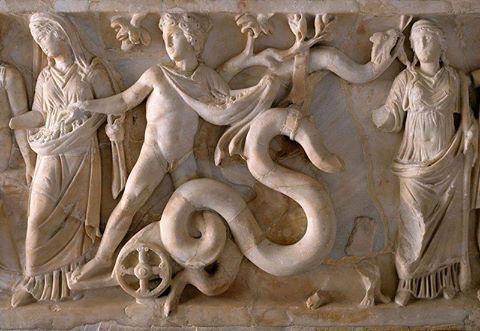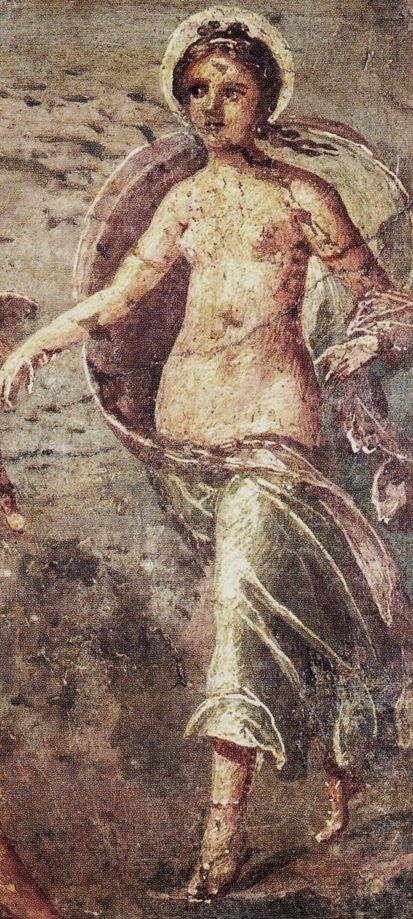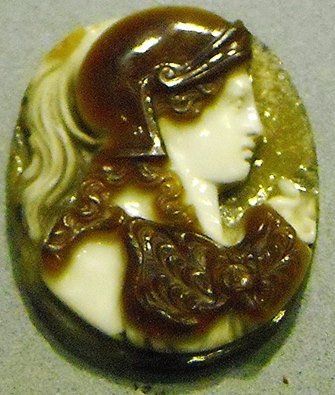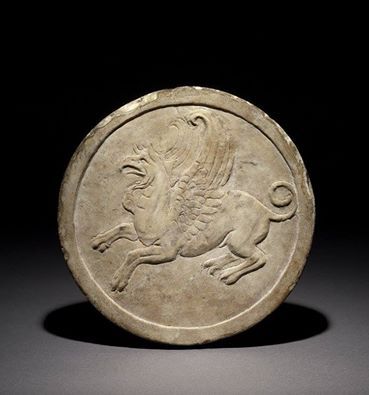Link
16 notes
·
View notes
Photo

Εἰκοστή/ Εἰκὰς/ Εἰκοσάδες, XX day From today's sunset: twentieth day of Elaphebolion. Sacred Εἰκὰς: the twentieth of each month is always sacred to Apollo and Athena. Monthly festival dedicated to Lord Apollo. "On the great twentieth, in full day, a wise man should be born. Such a one is very sound-witted." "He (Hesiod) calls it 'great' because it contains most of the days of the month; therefore all the day is suitable for birth, or he (Hesiod) has called it 'great', as if it were completing great undertakings. The one who is generated in this day is very virtuous and learned." Hesiod and scholia, Erga, 792 (Belvedere Apollo, detail. Roman copy after a Greek bronze original of 330–320 BCE. Found in the late 15th century. Now in the Vatican Museum...)
201 notes
·
View notes
Photo

Ἑβδόμη Μεσοῦντος/ Ἑβδóμη ἐπὶ δέκα / Ἑπτακαιδεκάτη, XVII day From today's sunset: seventeenth day of Elaphebolion. "Throw out Demeter's holy grain upon the well-rolled threshing floor on the seventh of the mid-month. Let the woodman cut beams for house building and plenty of ships' timbers, such as are suitable for ships." The scholia add: "If, as Orpheus says, the seventeenth day is dedicated to Ate, and therefore it is suitable for cutting the wood and for stripping the fruit from its coverings, also Hesiod, not without love for the Muses, consecrated the day to these works." Erga, 805-808 (Detail of a sarcophagus - Triptolemus with Demeter and a Goddess. Mid 2nd century CE. Now in the Louvre..)
181 notes
·
View notes
Photo

Τετάρτη Μεσοῦντος/ Τετρὰς ἐπὶ δέκα/ Τεσσαρεκαιδεκάτη, XIV day From today's sunset: fourteenth day of Elaphebolion. Full Moon. Conclusion of the Megala Dionysia in the City; Pandia, very ancient festival, celebrated after the Dionysia, in honor of Selene, Zeus and Pandia “And next, sweet voiced Muses, daughters of Zeus, well-skilled in song, tell of the long-winged Moon. From Her immortal head a radiance is shown from heaven and embraces earth; and great is the beauty that ariseth from Her shining light. The air, unlit before, glows with the light of Her golden crown, and Her rays beam clear, whensoever bright Selene having bathed Her lovely body in the waters of Ocean, and donned Her far-gleaming raiment, and yoked Her strong-necked, shining team, drives on Her long-maned horses at full speed, at eventime in the mid-month: then Her great orbit is full and then Her beams shine brightest as She increases. So She is a sure token and a sign to mortal men. Once the Son of Cronos was joined with Her in love; and She conceived and bare a daughter, Pandia, exceeding lovely amongst the deathless Gods. Hail, white-armed Goddess, bright Selene, mild, bright-tressed queen! “HH 32 1 (Selene, I BCE. From Pompeii, now in Museo Archeologico Nazionale, Napoli)
225 notes
·
View notes
Photo

Ὀγδόη Ἱσταμένου, VIII day From today's sunset: eighth day of Elaphebolion. The eighth day is always sacred to Poseidon and Theseus. "Poseidon Asphaleios stands for the ogdoad." "The eight day of Elaphebolion is the day of the sacrifice to Asklepios and the proagon of the festivities (of the Great Dionysia)" - "The sacred day." Singing the Paean and sacrifice in honor of the God Asklepios. Proagon of the Great Dionysia; meeting of the Iobakkhoi. The Proagon is the occasion during which the authors, choregoi, musicians, chorus and actors appear before the supervisors, as well as to the public, without masks and costumes but wearing garlands. A provisional stage was mounted in the Odeion and the chosen poets illustrated the subject of their works that will be represented during the Dionysia, before the God in the Theatre. (Cf. Esch. Or. III 66; Symp. 1194 ff; Aeschin. Ctesiph. 63.67; Schol. Aeschin.3.66-67) "The eighth and the ninth of the month that begins: these are the best days to accomplish the man's works: (Hesiod) praises the eighth and ninth plausibly as they carry perfection (syntelestikai) and therefore he has dedicated them to the human activities...one (the eight), by having a perfect dimension, the other (the nine), by deriving from a perfect number (the three), bring to accomplishment the works undertaken in them." Schol. Erga, 772-773 (Greek votive marble stele. The dedicant, portrayed in small size, is standing in the left corner of the relief. The God Asclepius and Hygeia occupy the scene. Late 5th cent. BCE. Now in the Vatican Museums...)
49 notes
·
View notes
Photo

Τετρὰς Φθίνοντος/ Τετρὰς μετ’εἰκάδας, XXVII day From today's sunset: twenty-seventh day (fourth waning of the third decade) of Anthesterion. “Take care to avoid troubles which eat out the heart on the fourth of the beginning and ending of the month; it is a sacred day: especially during these sacred days it is convenient to get rid of all the activities that make you suffer, which, if at other times you need to choose them as necessary, in these days you should not." "Few know that the fourth day after the twenty of the month (τὴν μετ’εἰκαδα τοῦ μηνὸς τετάρτην) is the best day... He (Hesiod) eulogizes all the tetrads, the first, the second and the third...about the third tetrad, he says that few are those who know that it is better during the morning's hours."- that is, tomorrow morning from the dawn. Scholia Erga, 797, 820 (Dancer. Terracotta from Tanagra, 5th century BC. Museo Archeologico Nazionale, Taranto, Italy.)
71 notes
·
View notes
Photo

Ἕκτη Φθίνοντος/ Ἕκτη μετ’εἰκάδας, XXV day From today's sunset: twenty-fifth (sixth waning of the third decade) of Anthesterion. ΜΙΚΡΑ ΜΥΣΤΗΡΙΑ - VI day of the LESSER ELEUSINIAN MYSTERIES "The cathartic (pertaining to purification) and the theoretic (virtues) are telestic (pertaining to mystic ceremonies). Hence, Olympiodoros adds, the cathartic virtues are denominated from the purification which is used in the Mysteries; but the theoretic from perceiving divine things. On this account, he accords with the Orphic verses, that 'the uninitiated soul that dies lies plunged in Hades in the blackest mire' For initiation is the divinely inspired energy of the virtues." Iamblichus, Pythagorean Life 167 "For them (the Blessed Ones initiated in the Mysteries) in Elysium the Sun shineth in his strength, in the world below, while here ‘tis night; and, in meadows red with roses, the space before their city is shaded by the incense-tree, and is laden with golden fruits. Some of them delight themselves with horses and with wrestling; others with draughts, and with lures; while beside them bloometh the fair flower of perfect bliss. And over that lovely land fragrance is ever shed, while they mingle all manner of incense with the far-shining fire on the Altar of the Gods. From the other side sluggish streams of darksome night belch forth a boundless gloom." (Pindar, Dirges Fragment 129) (Kore holding the torch; Museum of Cyrene)
246 notes
·
View notes
Photo

Εἰκοστή/ Εἰκὰς/ Εἰκοσάδες, XX day From today's sunset: twentieth day of Anthesterion. ΜΙΚΡΑ ΜΥΣΤΗΡΙΑ - I day of the LESSER ELEUSINIAN MYSTERIES Sacred Εἰκὰς: the twentieth of each month is always sacred to Apollo and Athena. "Every year two mystery cults are celebrated in honor of Demeter and Kore, the Lesser and the Great (Mysteries). The Lesser take the form of a purification and attainment of a state of purity, preliminary to the Great Mysteries." Schol. Pluto 845f "The Great Mysteries were in honor of Demeter, the Lesser in honor of Her Daughter Persephone." Schol. Pluto 846 *** Moreover, "On the great twentieth, in full day, a wise man should be born. Such a one is very sound-witted." "He (Hesiod) calls it 'great' because it contains most of the days of the month; therefore all the day is suitable for birth, or he (Hesiod) has called it 'great', as if it were completing great undertakings. The one who is generated in this day is very virtuous and learned." Hesiod and scholia, Erga, 792 (Terracotta figure of Persephone standing,Her right hand raised and holding a pomegranate. From Tanagra, 270 BCE. Now in the British Museum...)
120 notes
·
View notes
Photo

Ἑνάτη Ἱσταμένου, IX day From today's sunset: ninth day of Anthesterion. The ninth day is always sacred to the Muses, to Rhea and to Helios. "The eighth and the ninth of the month that begins: these are the best days to accomplish the man's works: (Hesiod) praise the eighth and ninth plausibly as they carry perfection (syntelestikai) and therefore he has dedicated them to the human activities...one (the eight), by having a perfect dimension, the other (the nine), by deriving from a perfect number (the three), bring to accomplishment the works undertaken in them." Schol. Erga, 772-773 "The ninth of the first part of the month, for all men, is completely devoid of evils: it is good both for planting and for generating, both for a man and for a woman, and it is never a day completely bad." "From discoursing about king Apollo, Plato proceeds to the Muses, and the name of music; for Apollo is celebrated as Musagetes, or the leader of the Muses. And He indeed is a monad with respect to the harmony in the world; but the choir of the Muses is the monad of all the number of the ennead (i.e. nine): From both likewise the whole world is bound in indissoluble bonds, and is one and all-perfect, through the communications of these divinities; possessing the former through the Apolloniacal monad, but its all-perfect subsistence through the number of the Muses. For the number nine which is generated from the first perfect number (that is 3) is, through similitude and sameness, accommodated to the multiform causes of the mundane order and harmony; all these causes at the same time being collected into one summit for the purpose of producing one consummate perfection." (Proclus on the Cratylus of Plato Concerning the Muses) (Detail of a marble statue of Polymnia from Monte Calvo, Italy. 2nd century CE. Now in the Ny Carlsberg Glyptotek...)
69 notes
·
View notes
Photo

Ὀγδόη Ἱσταμένου, VIII day From today's sunset: eighth day of Anthesterion. The eighth day is always sacred to Poseidon and Theseus. "Poseidon Asphaleios stands for the ogdoad." "The eighth and the ninth of the month that begins: these are the best days to accomplish the man's works: (Hesiod) praises the eighth and ninth plausibly as they carry perfection (syntelestikai) and therefore he has dedicated them to the human activities...one (the eight), by having a perfect dimension, the other (the nine), by deriving from a perfect number (the three), bring to accomplishment the works undertaken in them." Schol. Erga, 772-773 (Amphitrite seated on a dolphin. From South Italy, Locride, 460-450 circa BCE. Now in the Louvre....)
113 notes
·
View notes
Photo

Τριακάς - From today's sunset: Ἑκάτης δεῖπνον. The end of the Month, the Old and New - it is always sacred to the Goddess Hekate. https://www.academia.edu/11144029/Hekate_cenni_teologici_e_culto "the thirtieth we celebrate in Hades because of Hekate" - ie , the thirtieth day of the month (if present, otherwise the 29th, which is, in any case, called 'thirtieth') is honored Hekate as it is the last day of the month and at the same time, we also honor the dead (in fact, in its calendar, Pletho dedicated the twenty-ninth day to Pluto). "The image of Hekate is erected and consecrated at the crossroads, and rites in honor of the dead have been made on the thirtieth day." The last day of the month must be also devoted to meditation and to the reconsideration of the work done during the month, as well as to the preparation for the new month to come. In any case, no one should undertake an important work during this last day. It is highly recommended to fast for the whole day (for example, this was the habit of Proklos) (Stater of Lampsakos - Head of Hekate, laureate to left with pearl necklace and earring; behind the head is a flaming torch. The hair is drawn up behind and gathered in a small high knot. Reverse: Forepart of horse with curled wings, one above, one below, jumping to right. 387–330 BCE. Now in the Boston Museum...)
36 notes
·
View notes
Photo

Τριακάς - From today's sunset: Ἑκάτης δεῖπνον. The end of the Month, the Old and New - it is always sacred to the Goddess Hekate. https://www.academia.edu/11144029/Hekate_cenni_teologici_e_culto "the thirtieth we celebrate in Hades because of Hekate" - ie , the thirtieth day of the month (if present, otherwise the 29th, which is, in any case, called 'thirtieth') is honored Hekate as it is the last day of the month and at the same time, we also honor the dead (in fact, in its calendar, Pletho dedicated the twenty-ninth day to Pluto). "The image of Hekate is erected and consecrated at the crossroads, and rites in honor of the dead have been made on the thirtieth day." The last day of the month must be also devoted to meditation and to the reconsideration of the work done during the month, as well as to the preparation for the new month to come. In any case, no one should undertake an important work during this last day. It is highly recommended to fast for the whole day (for example, this was the habit of Proklos) (Detail of a marble statue of Hekate. First century CE. Now in the Rijksmuseum van Oudheden - Leiden...)
#Hekate Ἑκάτης δεῖπνον#Attic Calendar Hekate#Attic Calendar celebrations#Hekate sacred day#Hekate statue
55 notes
·
View notes
Photo

Δευτέρα Φθίνοντος/ Δευτέρα μετ’εἰκάδας, XXIX day From today's sunset: twenty-ninth day (second waning of the third decade) of Boedromion. 'Impure' day. Attested are libations for the deceased and ceremonies in their honor. https://www.academia.edu/5020720/Tradizione_Ellenica-_Onori_ai_Defunti (Six figures are carved in low relief in a panel between the raised band at the top and the narrow fillet at the bottom. An elderly, bearded man, seats in a chair and faces left. The name, ‘Kallias’, is inscribed in Greek above his head. He clasps hands with a matronly woman standing before him. She bows her head and raises her left hand to her shoulder. The letters, painted in Greek, ‘….ito’ appear to the right of her head. A second woman stands behind her and holds a colored object in her right hand. To the left of her head is the inscription, ‘Kallis’, and to the right ‘Tarete’. A servant girl stands behind her holding two items: a box hanging from a cord in her lowered right hand, and another box in her more forward left hand. Behind the man’s chair stands a young girl with the inscription ‘Demainete’ directly above her head, and beyond her appears a man with a short beard, a strigil in his raised right hand, and a short cloak from waist to knees. The inscription, “Eubios’ is above his head, and behind his shoulder is the top of a staff or a branch. Grave marker in the form of stone lekythos. From Attica, about 390–380 BCE. Now in the Boston Museum...)
#libations for the deceased#Hellenismo onori defunti#Grave marker Greece#Attic Calendar#Attic Calendar sacred days
47 notes
·
View notes
Photo

Τρίτη Φθίνοντος/ Τρίτη μετ’εἰκάδας, XXVIII day From today's sunset: twenty-eighth day (third waning of the third decade) of Boedromion. The twenty-eighth- Τριτομηνίς- is always sacred to Athena. (Head of Athena - cameo sardonic agathe - Naples Archaeological Museum)
199 notes
·
View notes
Photo

Πέμπτη Φθίνοντος/ Πέμπτη μετ’εἰκάδας, XXVI day From today's sunset: twenty-sixth (fifth waning of the third decade) day of Boedromion. Meeting of the Areopagus Council in Eleusis. "Shun the fifth days: i.e. the lunar days. We have heard from the Pythagoreans that the number five is number of Dike, and among them are told the causes of this..as She punishes all those who stray from the divine law, as told by Plato (Laws IV, 716a)." Scholia to Hesiod, Erga, 802-804 "Artemis betook herself to Nemesis, and found Her on the heights of Tauros in the clouds, where beside neighbouring Kydnos She had ended the proudnecked boasting of Typhon's threats. A wheel turned itself round before the Queen's feet, signifying that She rolls all the proud from on high to the ground with the avenging wheel of justice, She the allvanquishing deity who turns the path of life. Round Her throne flew a bird of vengeance, a Griffin flying with wings, or balancing himself on four feet, to go unbidden before the flying Goddess and show that She herself traverses the four separate quarters of the world: highcrested men She bridles with Her bit which none can shake off, such is the meaning of the image, and She rolls a haughty fellow about as it were with the whip of misery, like a self-rolling wheel." (Nonnus, Dionysiaca 48. 375 ff.) (Marble oscillum - The obverse depicts a griffin springing to the left. From Pompeii, now in the British Museum...)
#Areopagus meeting Eleusis#Eleusis sacred calendar#Attic Calendar sacred days#Griffin Nemesis#Nemesis sacred days
49 notes
·
View notes
Photo

Ἕκτη Φθίνοντος/ Ἕκτη μετ’εἰκάδας, XXV day From today's sunset: twenty-fifth day of Boedromion. Since for today there are no other religious prescriptions, apart from the daily ones, we honor Selene in Her sacred day. (Silver statuette of Selene, the Moon-Goddess. She originally held a torch in Her right hand. Now in the British Museum...)
19 notes
·
View notes
Photo

Ἑβδόμη Φθίνοντος/ Ἑβδόμη μετ’εἰκάδας, XXIV day From today's sunset: twenty-fourth day of Boedromion. Assembly in the City Eleusinion after the performance of the Mysteries.(And. 1. 111; IG II2 848) “When we had returned from Eleusis, and the information had been presented and the King Archon had made his appearance, to deliver, as is a custom of the Prytanes, his report of what had taken place at Eleusis during the Festival, they requested that they might take him before the Senate and asked him to notify both Cephisius and me to be present at the Eleusinium. For the Senate was about to sit there, according to the law of Solon which commands them to sit in the Eleusinium upon the day after the performance of the Mysteries.” Andocides, On the Mysteris, 1. 111 (Marble statuette of Persephone wearing a high polos and holding a pomegranate flower. From the Sanctuary of Underworld Deities in Knidos, circa 350-300 BCE. Now in the British Museum...)
#Eleusis Mysteries#Calendar Eleusinian Mysteries#Persephone pomegranate flower#Attic Calendar Mysteries
38 notes
·
View notes